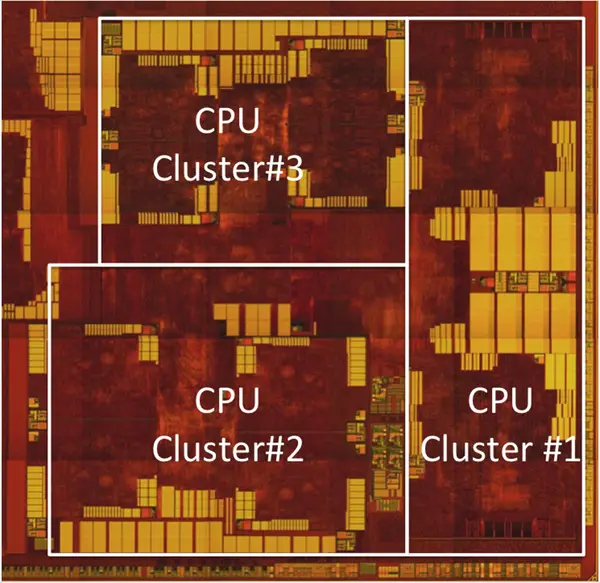From WikiChip
Difference between revisions of "arm holdings/microarchitectures/cortex-a72"
m (Reverted edits by 80.217.204.19 (talk) to last revision by David) |
Atomsymbol (talk | contribs) m (Fix grammar) |
||
| Line 12: | Line 12: | ||
|successor link=arm_holdings/microarchitectures/cortex-a73 | |successor link=arm_holdings/microarchitectures/cortex-a73 | ||
}} | }} | ||
| − | '''Cortex-A72''' (codename '''Maya''') is the successor to the {{armh|Cortex-A57|l=arch}}, a low-power high-performance [[ARM]] [[microarchitecture]] designed by [[ARM Holdings]] for the mobile market. This microarchitecture is designed as a synthesizable [[IP core]] and is sold to other semiconductor companies to be implemented in their own chips. The Cortex-A72, which implemented the {{arm|ARMv8}} ISA, is | + | '''Cortex-A72''' (codename '''Maya''') is the successor to the {{armh|Cortex-A57|l=arch}}, a low-power high-performance [[ARM]] [[microarchitecture]] designed by [[ARM Holdings]] for the mobile market. This microarchitecture is designed as a synthesizable [[IP core]] and is sold to other semiconductor companies to be implemented in their own chips. The Cortex-A72, which implemented the {{arm|ARMv8}} ISA, is a performant core which is often combined with a number of lower power cores (e.g. {{\\|Cortex-A53}}) in a {{armh|big.LITTLE}} configuration to achieve better energy/performance. |
== Compiler support == | == Compiler support == | ||
Revision as of 13:54, 3 December 2019
| Edit Values | |
| Cortex-A72 µarch | |
| General Info | |
| Arch Type | CPU |
| Designer | ARM Holdings |
| Manufacturer | TSMC |
| Introduction | April 23, 2015 |
| Instructions | |
| ISA | ARMv8 |
| Succession | |
Cortex-A72 (codename Maya) is the successor to the Cortex-A57, a low-power high-performance ARM microarchitecture designed by ARM Holdings for the mobile market. This microarchitecture is designed as a synthesizable IP core and is sold to other semiconductor companies to be implemented in their own chips. The Cortex-A72, which implemented the ARMv8 ISA, is a performant core which is often combined with a number of lower power cores (e.g. Cortex-A53) in a big.LITTLE configuration to achieve better energy/performance.
Contents
Compiler support
| Compiler | Arch-Specific | Arch-Favorable |
|---|---|---|
| Arm Compiler | -mcpu=cortex-a72 |
-mtune=cortex-a72
|
| GCC | -mcpu=cortex-a72 |
-mtune=cortex-a72
|
| LLVM | -mcpu=cortex-a72 |
-mtune=cortex-a72
|
If the Cortex-A72 is coupled with the Cortex-A53 or the Cortex-A35 in a big.LITTLE system, GCC also supports the following option:
| Compiler | Tune |
|---|---|
| GCC | -mtune=cortex-a72.cortex-a53-mtune=cortex-a72.cortex-a35
|
Architecture
Key changes from Cortex-A57
| This section is empty; you can help add the missing info by editing this page. |
Block Diagram
| This section is empty; you can help add the missing info by editing this page. |
Memory Hierarchy
| This section is empty; you can help add the missing info by editing this page. |
Die
MediaTek Helio X20
- TSMC 20 nm process
- 100 mm² die size
- Quad-core ULP Cortex-A53
- ~21.81 mm² per cluster
- ~4.23 mm² per core
- ~21.81 mm² per cluster
- Quad-core efficient Cortex-A53
- ~29.73 mm² per cluster
- ~5.41 mm² per core
- ~29.73 mm² per cluster
- Dual-core High-performance Cortex-A72 + 1 MiB L2
- ~27.36 mm² per cluster
- ~ 9.60 mm² per core
- ~ 7.50 mm² for 1 MiB L2
- ~27.36 mm² per cluster
Bibliography
- Mair, Hugh T., et al. "4.3 A 20nm 2.5 GHz ultra-low-power tri-cluster CPU subsystem with adaptive power allocation for optimal mobile SoC performance." Solid-State Circuits Conference (ISSCC), 2016 IEEE International. IEEE, 2016.
Facts about "Cortex-A72 - Microarchitectures - ARM"
| codename | Cortex-A72 + |
| designer | ARM Holdings + |
| first launched | April 23, 2015 + |
| full page name | arm holdings/microarchitectures/cortex-a72 + |
| instance of | microarchitecture + |
| instruction set architecture | ARMv8 + |
| manufacturer | TSMC + |
| microarchitecture type | CPU + |
| name | Cortex-A72 + |
